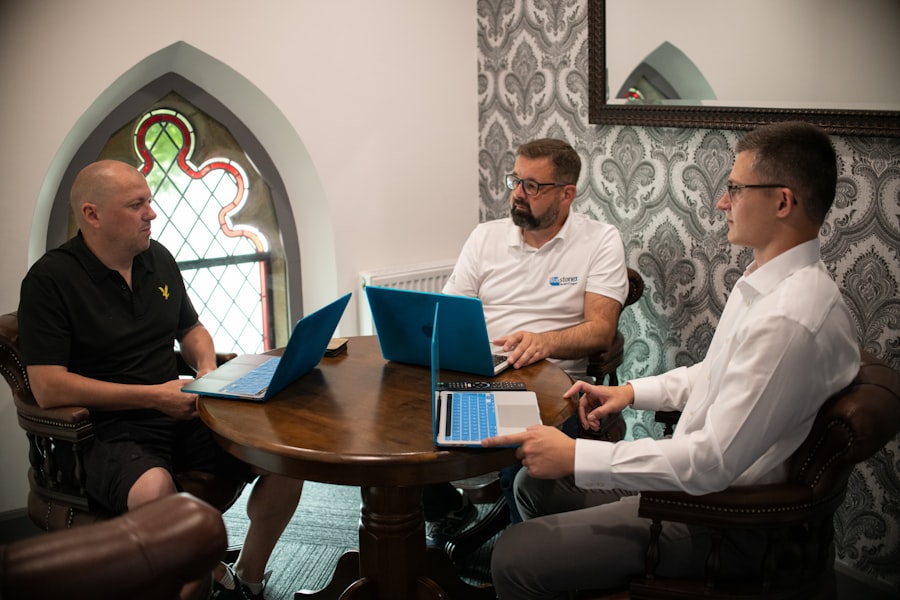Creating a robust sustainability plan is the cornerstone of any organization aiming to integrate sustainable practices into its operations. A well-defined sustainability plan serves as a roadmap, guiding businesses through the complexities of environmental responsibility while aligning with their core values and objectives. The first step in this process involves conducting a thorough assessment of the current environmental impact of the organization.
This includes evaluating energy consumption, waste generation, water usage, and carbon emissions. By identifying key areas where improvements can be made, organizations can set specific, measurable goals that are both ambitious and achievable. Once the assessment is complete, it is essential to engage stakeholders in the development of the sustainability plan.
This includes not only internal stakeholders such as employees and management but also external parties like customers, suppliers, and community members. By fostering an inclusive dialogue, organizations can gain diverse perspectives that enrich the sustainability strategy. For instance, a manufacturing company might hold workshops with employees to brainstorm innovative ways to reduce waste in production processes.
Additionally, engaging with local communities can provide insights into regional environmental concerns, allowing the organization to tailor its initiatives to address these issues effectively.
Key Takeaways
- Developing a clear sustainability plan is essential for setting goals and creating a roadmap for sustainable practices.
- Implementing green practices and technologies can help reduce environmental impact and improve efficiency.
- Building strong relationships with suppliers and partners is crucial for aligning sustainability efforts throughout the supply chain.
- Investing in employee training and development can foster a culture of sustainability and empower employees to contribute to sustainable practices.
- Fostering innovation and adaptability is important for staying ahead of sustainability trends and finding new ways to improve practices.
Implementing Green Practices and Technologies
The implementation of green practices and technologies is a critical step in operationalizing a sustainability plan. Organizations can adopt various strategies to minimize their environmental footprint, ranging from energy-efficient lighting to advanced waste management systems. For example, many companies are transitioning to LED lighting, which not only reduces energy consumption but also has a longer lifespan compared to traditional bulbs.
This shift not only lowers utility costs but also contributes to a significant reduction in greenhouse gas emissions. Moreover, the integration of renewable energy sources is becoming increasingly prevalent. Businesses are investing in solar panels and wind turbines to power their operations sustainably.
A notable example is Google, which has committed to operating on 100% renewable energy since 2017. This commitment not only enhances their brand reputation but also sets a precedent for other organizations in the tech industry. Additionally, adopting technologies such as smart thermostats and energy management systems can optimize energy use, further driving down costs and environmental impact.
Building Strong Relationships with Suppliers and Partners

Establishing strong relationships with suppliers and partners is vital for fostering a sustainable supply chain. Organizations must prioritize collaboration with vendors who share their commitment to sustainability. This can involve conducting audits to assess suppliers’ environmental practices and ensuring they adhere to ethical sourcing standards.
For instance, companies like Unilever have implemented a Sustainable Agriculture Code that requires suppliers to meet specific environmental criteria, thereby promoting sustainable farming practices across their supply chain. Furthermore, organizations can engage in partnerships that enhance their sustainability efforts. Collaborating with NGOs or industry groups can provide valuable resources and expertise in implementing sustainable practices.
For example, the World Wildlife Fund (WWF) collaborates with various corporations to promote sustainable sourcing of materials like palm oil and seafood. By working together, businesses can leverage shared knowledge and resources to drive systemic change within their industries.
Investing in Employee Training and Development
| Metrics | 2019 | 2020 | 2021 |
|---|---|---|---|
| Training Budget (in thousands) | 100 | 120 | 150 |
| Number of Training Hours | 500 | 600 | 700 |
| Employee Satisfaction Score | 4.2 | 4.5 | 4.8 |
Investing in employee training and development is crucial for embedding sustainability into an organization’s culture. Employees are often the frontline advocates for sustainable practices, and equipping them with the necessary knowledge and skills can lead to significant improvements in operational efficiency. Training programs should cover various aspects of sustainability, including waste reduction techniques, energy conservation strategies, and sustainable product design principles.
Moreover, fostering a culture of continuous learning encourages employees to innovate and contribute ideas for sustainability initiatives. For instance, companies like Patagonia have established internal programs that empower employees to propose and lead sustainability projects. This not only enhances employee engagement but also cultivates a sense of ownership over the organization’s sustainability goals.
By recognizing and rewarding employees who contribute to these initiatives, organizations can further motivate their workforce to prioritize sustainability in their daily operations.
Fostering Innovation and Adaptability
Innovation is at the heart of successful sustainability initiatives. Organizations must cultivate an environment that encourages creative problem-solving and adaptability in response to emerging environmental challenges. This can involve investing in research and development to explore new materials or processes that reduce environmental impact.
For example, companies in the fashion industry are increasingly experimenting with biodegradable fabrics and closed-loop production systems that minimize waste. Additionally, organizations should remain agile in their approach to sustainability, adapting their strategies as new technologies and best practices emerge. The rapid advancement of technology presents opportunities for businesses to enhance their sustainability efforts significantly.
For instance, the rise of artificial intelligence (AI) and machine learning can optimize supply chain logistics, reducing emissions associated with transportation. By staying informed about technological advancements and being willing to pivot when necessary, organizations can maintain their competitive edge while advancing their sustainability goals.
Engaging with the Local Community and Stakeholders

Engaging with the local community and stakeholders is essential for building trust and fostering goodwill around sustainability initiatives. Organizations should actively seek input from community members regarding their environmental concerns and priorities. This engagement can take many forms, including public forums, surveys, or collaborative projects aimed at addressing local environmental issues.
For example, a company might partner with local schools to create educational programs focused on environmental stewardship or sponsor community clean-up events. Such initiatives not only demonstrate corporate social responsibility but also strengthen community ties. Furthermore, by involving local stakeholders in decision-making processes related to sustainability initiatives, organizations can ensure that their efforts align with community needs and values.
Measuring and Monitoring Progress Towards Sustainability Goals
To ensure accountability and transparency in sustainability efforts, organizations must establish robust systems for measuring and monitoring progress towards their goals. This involves setting clear performance indicators that align with the objectives outlined in the sustainability plan. For instance, a company might track metrics such as energy consumption reduction percentages or waste diversion rates from landfills.
Regular reporting on these metrics is crucial for maintaining stakeholder trust and demonstrating commitment to sustainability. Many organizations publish annual sustainability reports that detail their progress, challenges faced, and future goals. These reports not only serve as a tool for internal assessment but also communicate the organization’s dedication to transparency with customers and investors alike.
By utilizing data analytics tools, businesses can gain insights into their performance trends over time, allowing them to make informed decisions about future sustainability initiatives.
Communicating and Educating Customers about Sustainable Practices
Effective communication about sustainable practices is vital for engaging customers and fostering loyalty. Organizations should strive to educate their customers about the importance of sustainability and how their products or services contribute to environmental well-being. This can be achieved through various channels such as social media campaigns, informative blog posts, or interactive workshops.
For instance, brands like Seventh Generation have successfully built their identity around eco-friendly products by transparently sharing information about their sourcing practices and environmental impact on packaging labels and marketing materials. By empowering customers with knowledge about sustainable choices, organizations can encourage more responsible consumer behavior while enhancing brand loyalty. Additionally, creating platforms for customer feedback on sustainability initiatives allows businesses to refine their strategies based on consumer preferences and expectations.
In conclusion, developing a comprehensive approach to sustainability requires commitment across all levels of an organization. From crafting a clear sustainability plan to engaging with stakeholders and measuring progress, each step plays a crucial role in fostering an environmentally responsible business model that resonates with both employees and customers alike.


